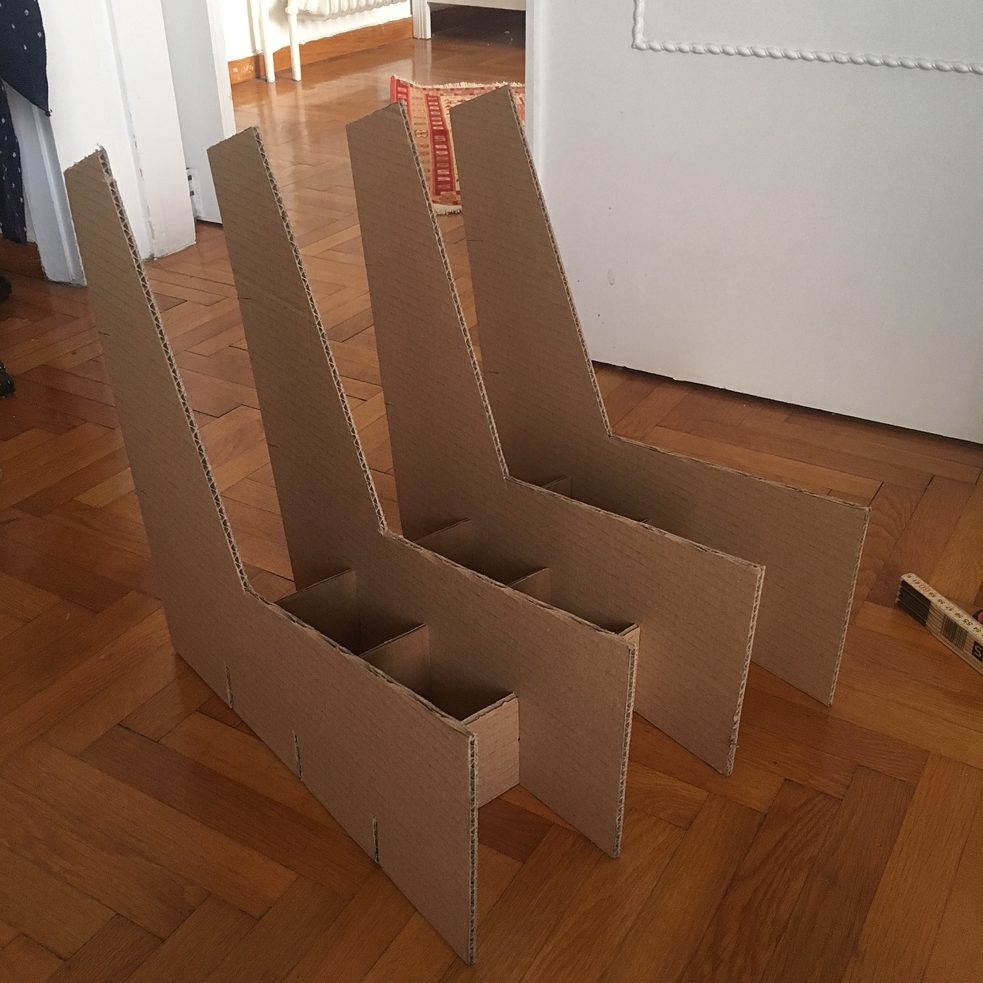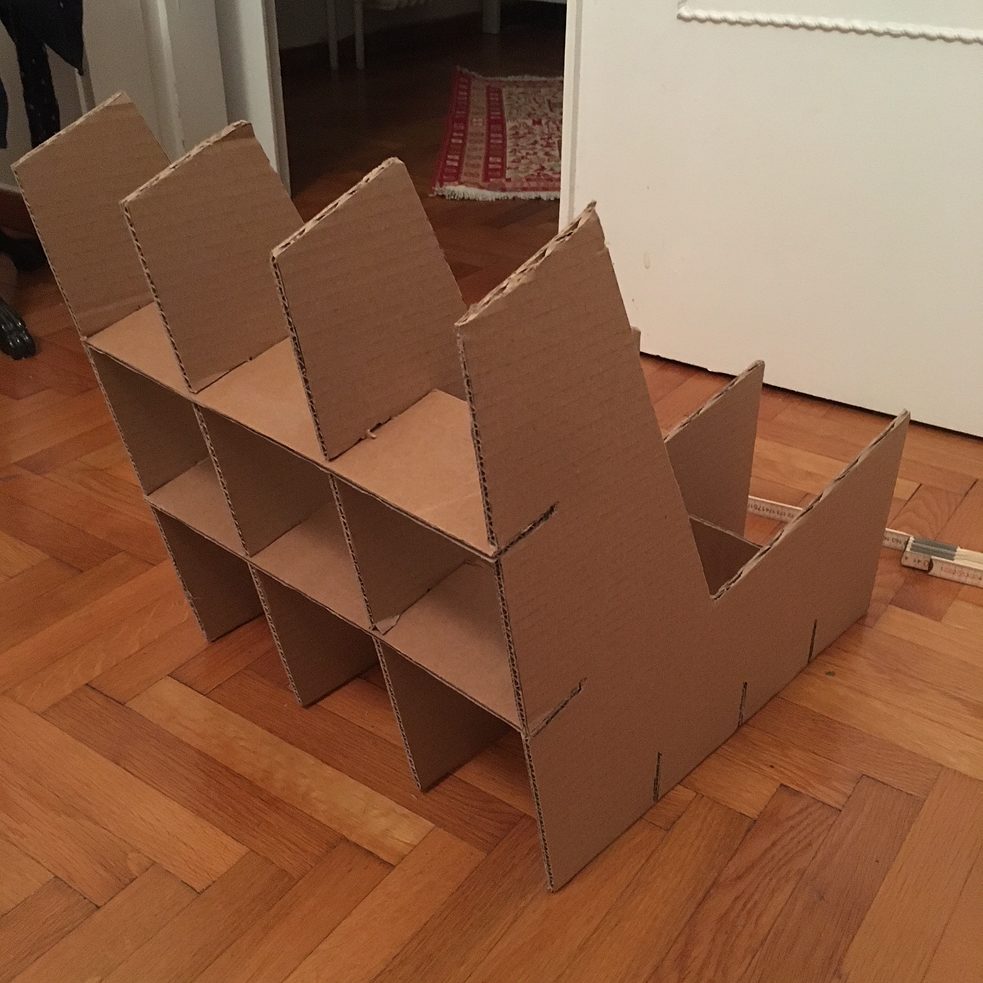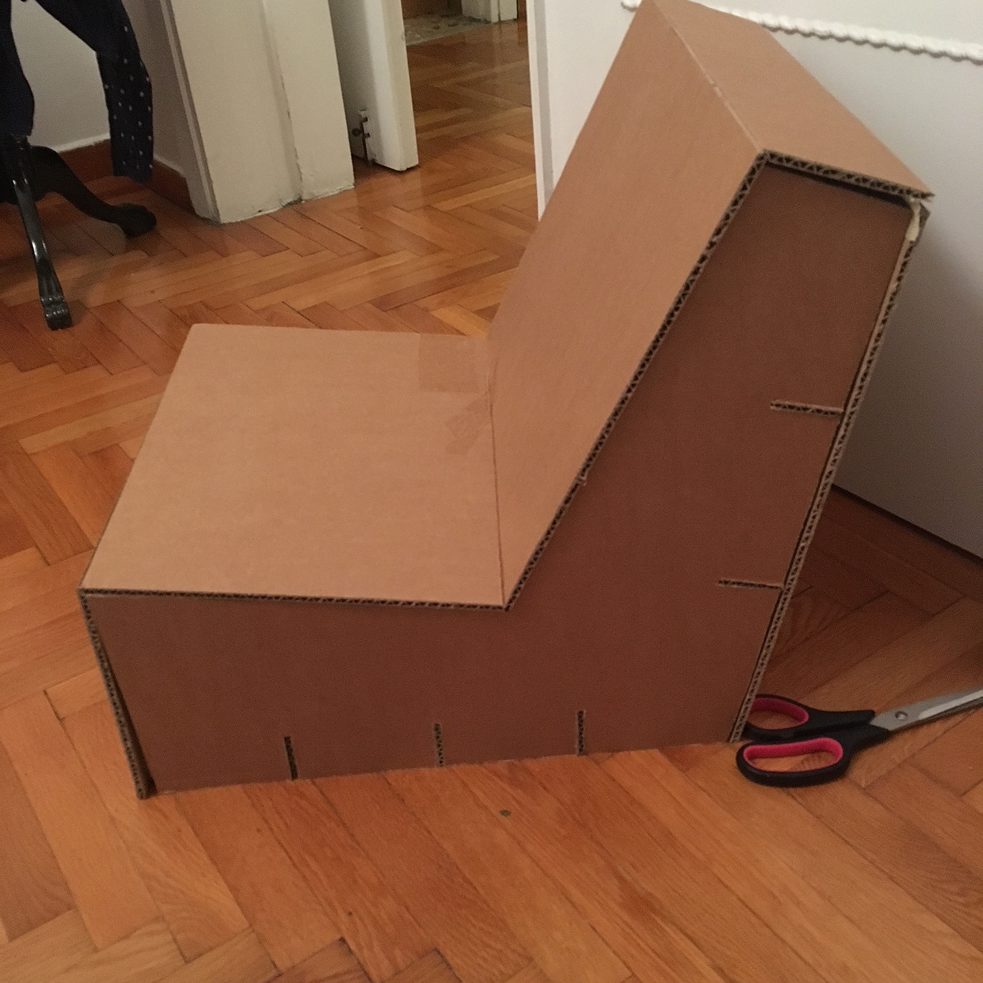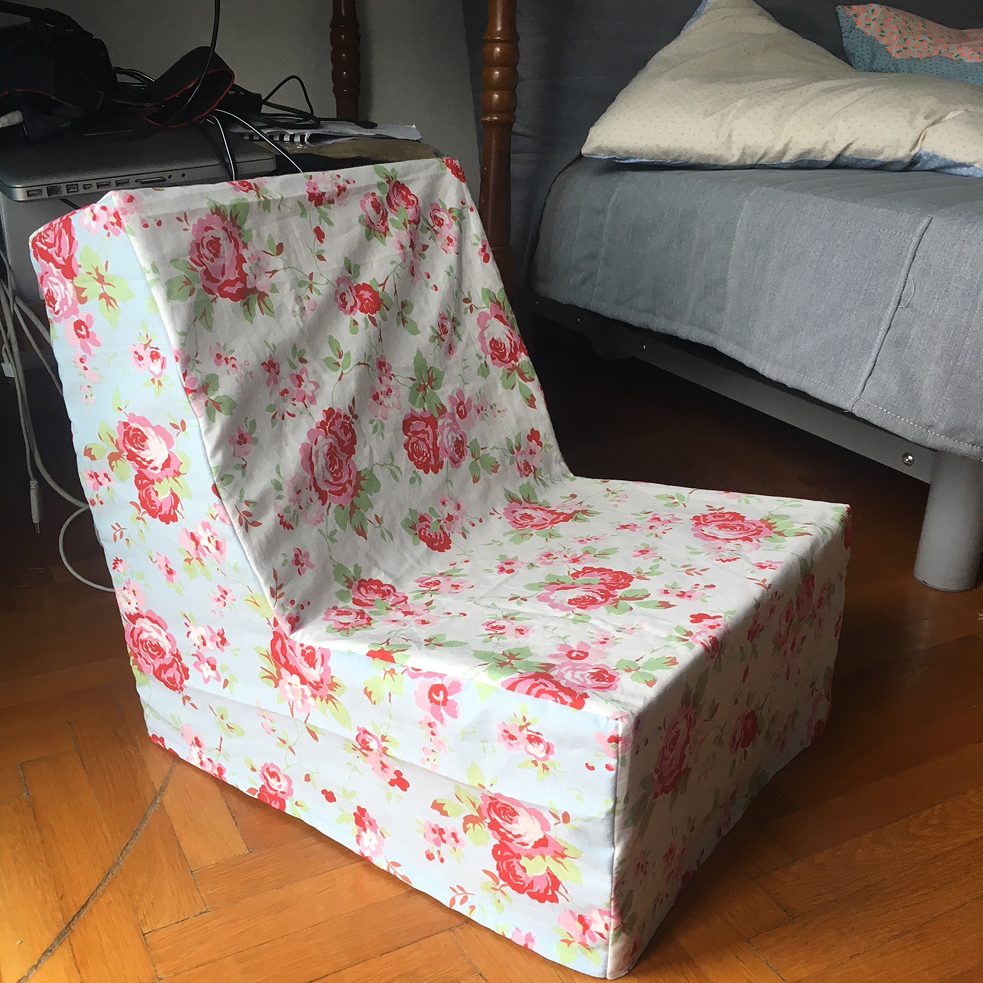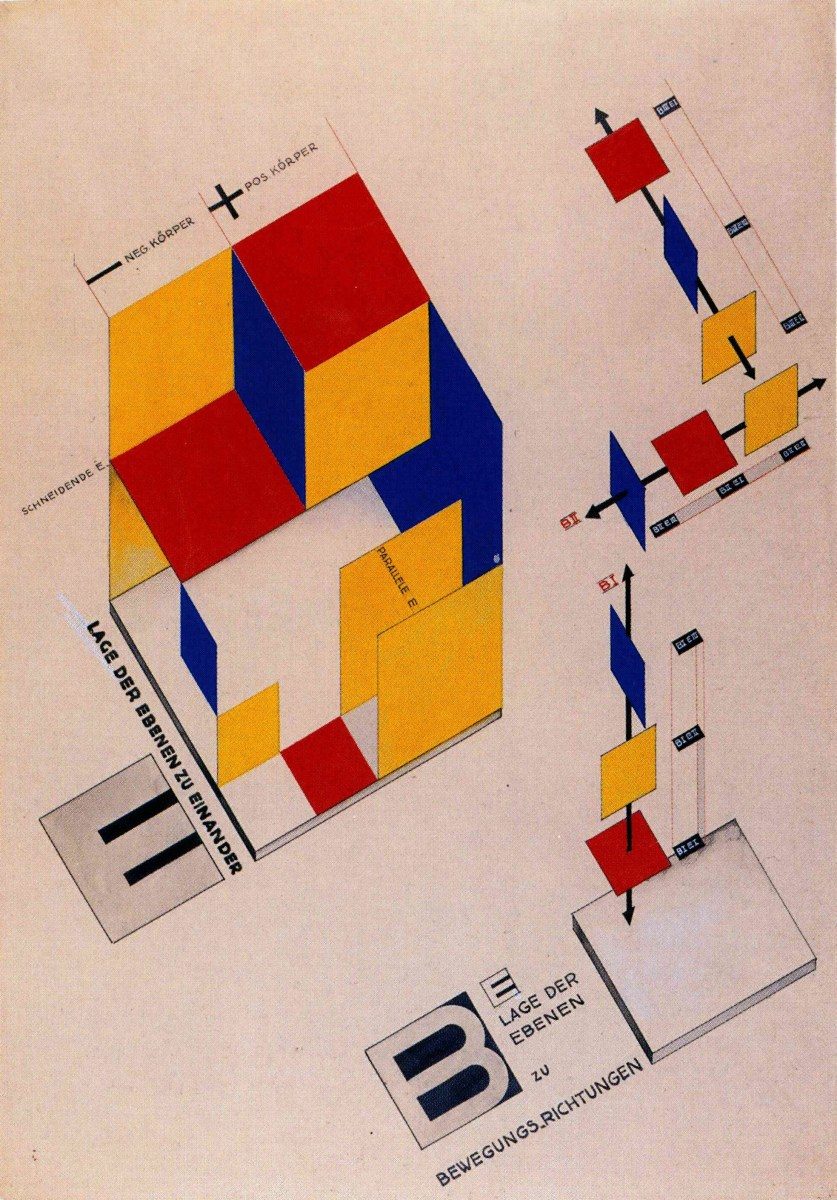Form Follows Function
Module 6
School // Workshop // Makerspace
Age 14–18 // 2x3 hours // 1 project day
Recycling // upcycling // cardboard furniture // packaging // making
Product design // furniture design // Marcel Breuer // Ludwig Mies van der Rohe
YOU WILL NEED:
 Silke Wittig | CC BY-NC-SA 4.0
Silke Wittig | CC BY-NC-SA 4.0
- A4 paper
- A3 paper
- graph paper
- strong corrugated cardboard (approx. 4 m2 per item of furniture)
- lead pencils
- ruler
- folding bone
- scissors
- craft knives
- cutting board
- cutting ruler
- sandpaper
- wood glue
- tape
INSTRUCTIONS
In this module participants learn about the design of everyday objects at the Bauhaus. Design was not taught as a subject in its own right at the Bauhaus. Instead, training took place in the workshops (like weaving and joinery), where practical work and theoretical questions of design were addressed together. The creation of “total artworks” (Gesamtkunstwerke) through collective endeavour was given special weight. After Walter Gropius proclaimed the motto “art and technology, a new unity” in 1923, the design of prototypes for industrial manufacturing became a top priority. Now questions of design were explored through a precise analysis of the problems and materials.After investigating Bauhaus design classics, participants design and build their own furniture. This might be done in collaboration with a local makerspace, in a workshop at a college of design, or any other suitably equipped room.
Exploring the material is a significant element of this module. Rather than using classic materials like wood or plastic, the module adopts the environmentally friendly idea of upcycling. Corrugated cardboard is used. Participants will be familiar with this lightweight material from its everyday use in packaging. Ideally old corrugated cardboard can be recycled, for example from packaging used for furniture or large electrical goods, or removal boxes.
Step 1: Participants discusses the motto “form follows function” and looks at pictures of well-known Bauhaus furniture and everyday objects. First, they explore the function, environmental parameters and production of the materials that were common at the time. Next they discuss the material question from today’s perspective – in relation to resources, biodegradability, reusability, quality, health and price. The idea is to put the idea of recycling and upcycling into practice. For that reason the properties of (corrugated) cardboard are investigated.
Step 2: Individually or in small groups, participants sketch out their ideas for simple furniture. They should pay attention to function, form, stability and whether the design can be realised using cardboard.
Step 3: After a discussion of the draft designs each group chooses one design and plans its structural realisation (using crossbars for stability). The required elements are identified, sketched and sized.
Step 4: Paper templates at scale 1:1 are cut out and transferred to the cardboard.
Step 5: The elements are carefully cut out using a craft knife, cutting ruler and cutting board (with supervision and assistance from workshop staff).
Step 6: When all the elements have been cut out, cuts are made for the pieces to slot together. This must be done especially precisely if the final result is to be stable.
Step 7: Now the individual elements are slotted together. Rough edges can easily be sanded smooth.
Step 8: Depending on the design and type, a covering may be needed. This can be made of the same cardboard. If the form is rounded it will be better to use single-layer corrugated cardboard. The covering can be fixed in place using wood glue and tape (but remember, then it cannot be removed easily). The furniture is ready to use.
